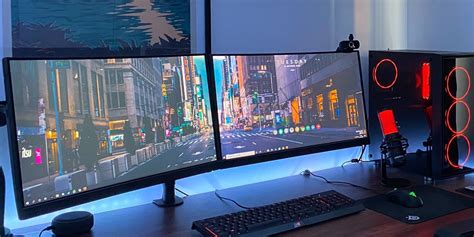How to Use Two Monitors: Maximize Your Productivity and Workspace
Using two monitors can dramatically boost your productivity and enhance your overall computing experience. This guide will walk you through everything you need to know, from initial setup to optimizing your workflow for maximum efficiency.
Setting Up Your Dual Monitor System
Before you dive into the productivity benefits, let's get your monitors connected and configured. This process varies slightly depending on your operating system and computer's capabilities, but the general steps are similar.
1. Connecting Your Monitors:
- Identify Your Connections: Check the ports on your computer (typically VGA, DVI, HDMI, DisplayPort, or USB-C) and match them with the ports on your monitors. Most modern computers have multiple video outputs.
- Connect the Cables: Firmly connect the appropriate cables from your computer to each monitor.
- Power On: Turn on both monitors and your computer. Your operating system should automatically detect the additional monitor.
2. Configuring Your Display Settings (Windows):
- Right-Click Your Desktop: Right-click on your desktop and select "Display settings."
- Identify Your Monitors: Windows will display your monitors. You can identify each monitor by dragging the numbered icons to match their physical placement.
- Arrange Your Displays: Choose how you want your displays arranged (extend your desktop or duplicate your displays). Extending your desktop is generally recommended for multitasking, as it gives you two separate workspaces. Duplicating your displays mirrors the same image on both screens.
- Adjust Resolution: Ensure each monitor is set to its native resolution for optimal clarity.
- Multiple Displays Settings: Explore additional settings like changing the primary monitor (the one where your start menu appears) and adjusting the refresh rate for smoother visuals.
3. Configuring Your Display Settings (macOS):
- System Preferences: Go to System Preferences > Displays.
- Arrangement: The arrangement tab lets you identify and position your monitors. Drag the displays to match their physical placement. Check the "Mirror Displays" box if you want to mirror the image. Unchecking this extends your desktop across both monitors.
- Resolution: Choose the optimal resolution for each monitor.
- Display Settings: Adjust brightness, color, and other display settings as needed.
Optimizing Your Dual Monitor Workflow
Now that your monitors are set up, let's explore how to maximize their potential for improved productivity.
1. Strategic Application Placement:
- Primary Monitor: Dedicate your primary monitor to your main task, such as writing a document or coding.
- Secondary Monitor: Use the second monitor for secondary applications like email, chat, or reference materials. This minimizes distractions and keeps your primary focus on the main task.
2. Utilize Virtual Desktops:
Both Windows and macOS offer virtual desktops (or spaces). This allows you to create separate workspaces for different projects or tasks. For example, you could have one virtual desktop for email and another for document editing. This is incredibly useful with a dual-monitor setup, allowing you to cleanly separate your workflow.
3. Maximize Screen Real Estate:
- Window Snapping: Learn how to use window snapping features (available in both Windows and macOS). This allows you to quickly and easily snap windows to specific sides or corners of your screens for efficient screen management.
- Use Multiple Windows: Open multiple windows side-by-side, utilizing the full space on both screens.
4. Customize Your Desktop:
A clean and organized desktop is crucial for productivity. Use desktop icons sparingly and consider using folders to group related files.
Troubleshooting Common Issues
- Monitor Not Detected: Ensure the cables are securely connected and that the monitors are powered on. Check your computer's display settings.
- Image Issues: Check the cables, adjust the resolution settings, and ensure your graphics drivers are updated.
By following these tips, you can transform your computing experience and unlock significant productivity gains with your dual monitor setup. Remember, the key is to find a configuration and workflow that best suits your individual needs and preferences.
